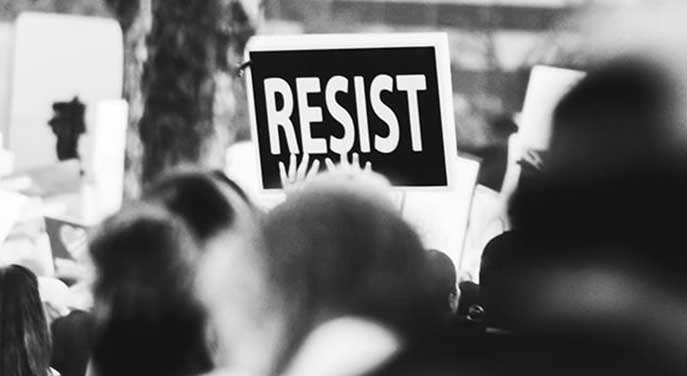 After years of resisting the recording of race-based statistics by police, there has been a sudden change of heart. Now, advocates and those seeking police reform want race-based data collected by police.
After years of resisting the recording of race-based statistics by police, there has been a sudden change of heart. Now, advocates and those seeking police reform want race-based data collected by police.
In Ontario, the authorities hope that by collecting officers’ perceptions of suspects it can expose any racial biases or stereotyping within police services. The new mandate has officers record and report the race of suspects they arrest, with use of force, based on seven categories: Black, East/Southeast Asian, Indigenous, Latino, Middle Eastern, South Asian and white.
While the intention is to identify racial bias, one has to question the effectiveness of this approach.
First, the mandate, by focusing solely on instances of use of force, leaves out the bulk of policing where systemic concerns are more likely to be impacted by bias.
Without mitigating the seriousness of the use of force, especially in cases where it’s motivated by racial bias, an accused may be subjected to a far more serious and damaging encounter with police during what are overly polite, routine and justifiable enforcement of any of several thousand Criminal Code or provincial charges. These charges may result in the arrest, conviction and incarceration of a person without there ever being any suspicion that the entire process was motivated by racial bias.
If the intent is to determine the presence of racial bias, then looking for instances of the use of force will be so limited to be almost meaningless in achieving the intended outcome of eliminating bias.
Police officers – especially under the present regime of professional and public oversight by way of the use of cellphones by citizens, body-worn cameras, in-car cameras and surveillance cameras – recognize that their actions may be recorded by someone, somewhere. And while not completely unlikely that officers will still engage in misconduct, as evidenced by the cases in the United States, it’s likely only to capture the carelessly or foolishly deserving.
What this mandate once again ignores are the underlying causes of the encounter. We already know there are more encounters with members of certain marginal communities. This is a fact born out by several substantive and objective systemic outcomes. Ample data from decades of carding by police services across Canada provides a powerful snapshot into the contact and enforcement patterns in large and small cities.
There’s also ample data from the corrections system of the rates of incarceration of different segments of society. Do we really need any more analysis given the substantive numbers of incarcerated in our correctional system?
It doesn’t take genius to examine the proportions of Indigenous peoples or peoples of colour in our prisons, or to take a drive through marginalized neighbourhoods and evidence the makeup of communities relegated to marginalization, or observe the dropout rates of marginalized children from our schools.
Examining use of force by race or counting arrests and charges by colour isn’t about to change police culture or the systemic barriers in the criminal justice system.
We’ve observed for decades a disproportionate arrest of certain segments of society by police, and their advancement through the criminal justice system, including by prosecutors, judges and parole boards, all of whom didn’t mitigate the charges, prosecution or incarceration of those people.
Either thousands of police officers, prosecutors, judges, and parole officers have all been corrupt and complicit in the persecution of those accused, or the entire checks and balances intended to be part of an adversarial system, the independence of police, prosecutions, corrections and politics provided enough evidence, justifiable, and authorized to convict those people.
The system isn’t perfect by any means, but is it reasonable to assume that those thousands of arrests have all been fabricated and trumped up?
It’s reasonable to allege that many of those charges could have been dismissed, diverted or simply ignored with judicious discretion.
It’s also reasonable to presume that if some of those accused had been given a break, matters would have been better for everyone involved.
But a denial of the fact that crimes were committed is unrealistic and ignores the more important issue of the underlying drivers that brought the offenders before the criminal justice system in the first place.
It’s reasonable to assume that alternatives to sentencing, diversion courts, circle conferencing or the application of Gladue weren’t applied as frequently as they could and should have. But once again, it doesn’t take away from the fact that multiple levels of the criminal justice system upheld the charges.
The mandate requires that police officers identify their perception of the race of the person with whom they’ve had the encounter involving the use of force. The potential unintended consequence of this is that officers who perceive a potentially confrontational encounter may choose instead to avoid the encounter, abdicating their responsibility. Or they could alter the evidence and charges in order to formulate the legal justification for the use of force.
Why classify some individuals by their culture (Latino), others by their places of origin (Indigenous, Middle Eastern, and South Asian) and only Blacks and whites by their colour?
If it’s all right to group people by colour, then stick with colour. But to group two book ends as either Black and white and everyone else in the middle as Indigenous, Latino, Middle Eastern or South Asian is problematic.
Although the classification is intended to capture an officer’s perception of the person they’re reporting, it’s not the end purpose of the data. Once that data is collected, it will be available for analysis, be made public and will be open to subjective interpretation.
People live in the real world, with real racism, violence, neglect and isolation resulting from the intolerance and bigotry of the ignorant.
Associating people with places also attaches the labels of geo-political and sectarian conflicts, of religious and cultural conflict and of the unwelcome regional attributions that may prevail from time to time. To pretend that these attributions don’t happen is dismissive of the entire anti-racism movement. It’s symptomatic of how readily, even unintentionally, we impose systemic classifications without being aware of their implications.
This policy is only about the use of force but it’s an official classification; it’s a reflection of how we perceive and treat our citizens. If governments or their institutions can classify citizens using such categorizations, it legitimizes its use generally.
The classification is counter to the Canadian principle of multiculturalism, the notion of a mosaic or cultural tapestry. For the sake of expediency, it erases entire cultural identitie,s replacing them with arbitrarily general labels, minimizing their richness and distinctness. It’s an exchange of the notion of a mosaic for a melting pot.
Implying that everyone from several different countries, each with very distinct cultures, religious practises, and social values is the same is offensive and wrong. The generalized labelling may be expedient for the system but not without concern.
This is a matter of identity, of a sense of belonging, of inclusion or exclusion for those who are subject to this classification. It’s about the cultural values of a public service under scrutiny for bias and systemic racism. It’s about examining every element that potentially contributes to the presence, perpetuation or implication of bias.
It’s time to move beyond tokenism and pacification, cease more studies and consultations, and get down to making real changes.
Anil Anand is a research associate with the Frontier Centre for Public Policy.
Anil is a Troy Media Thought Leader. Why aren’t you?
The views, opinions and positions expressed by columnists and contributors are the author’s alone. They do not inherently or expressly reflect the views, opinions and/or positions of our publication.


